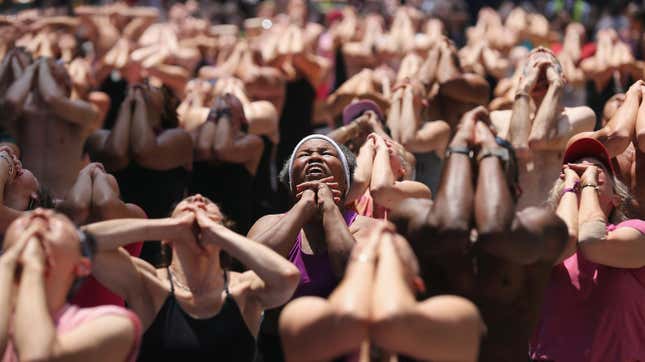The Lauded, Exploitive Fitness Guru's Endless Reign
Latest

Yoga to the People, a minimalist, bicoastal yoga studio, was founded around the cutting-edge idea that yoga should be affordable and accessible to all people. Greg Gumucio, the company’s founder, held its donation-based classes in airy lofts, branding himself as an evangelist of accessible, affordable fitness. The idea that yoga should be affordable stems back to the practice’s roots in Northern India beginning around 500 BCE, when yoga was free for all and students voluntarily cared for yoga teachers, who were largely hermits and traveled around sharing their knowledge.
But in a city like New York, where YTTP started, everything comes at a premium, and Gumicio’s platform of affordability made his organization—and his teaching—instantly popular. But in early July of this year, an Instagram account called YttP Shadow Work began posting stories of accusations against Gumicio and the culture at Yoga to the People. By the second week in July, Yoga to the People’s website disappeared and was replaced with a brief message saying the studios would be permanently closed. By the end of July, accusations against Gumicio had been compiled in a Vice investigation that revealed years of harassment. Gumicio has been accused of sexual misconduct and creating a toxic work environment at YTTP much like the man Gumicio claimed was his mentor, Bikram Choudhry.
While Gumicio did not “invent” a style of yoga to claim ownership,
While Gumicio did not “invent” a style of yoga to claim ownership,
he capitalized on affordability and turning yoga accessibility into an ethical sales pitch. By doing so, he was able to cultivate a sense of loyalty—positioning himself as a beneficent person wanting to spread his knowledge of the miracle of yoga to those who had previously been unable to experience it. He, like other allegedly predatory yoga teachers, posed as a giver and students were quickly willing to give him outsize power over their lives. Students say that Gumicio’s encompassing role in the company, as a founder-come-spiritual advisor, is part of what allowed him to have such powerful sway over students. Jill Bayne, who spoke to Vice, also referred to Gumicio as having a “very charismatic, mysterious, enigmatic, elusive aura around him, and he purposefully does that, as any cult leader does.”
He isn’t alone in the yoga world. Gumicio was a disciple of Bikram Choudhry, founder of wildly popular (and lucrative) Bikram Yoga (often referred to as hot yoga), who was accused of rape and sexual assault by several former students, who described him a Netflix documentary as a cult leader. The yoga community in the United States is crawling with so-called gurus who are revered until they are eventually accused of sexually or physically abusing their students for years, including Pattabhi Jois, B. K. S. Iyengar, and Yogi Bhajan. In 2019, Jezebel released a documentary about Swami Vivekananda Saraswati, who ran a retreat in Thailand called Agama and was accused of sexual assault.
-

-

-

-

-

-

-

-

-

-

-

-

-

-

-

-

-

-

-

-

-

-

-

-

-

-

-

-

-

-

-

-

-

-

-

-

-

-

-

-








































